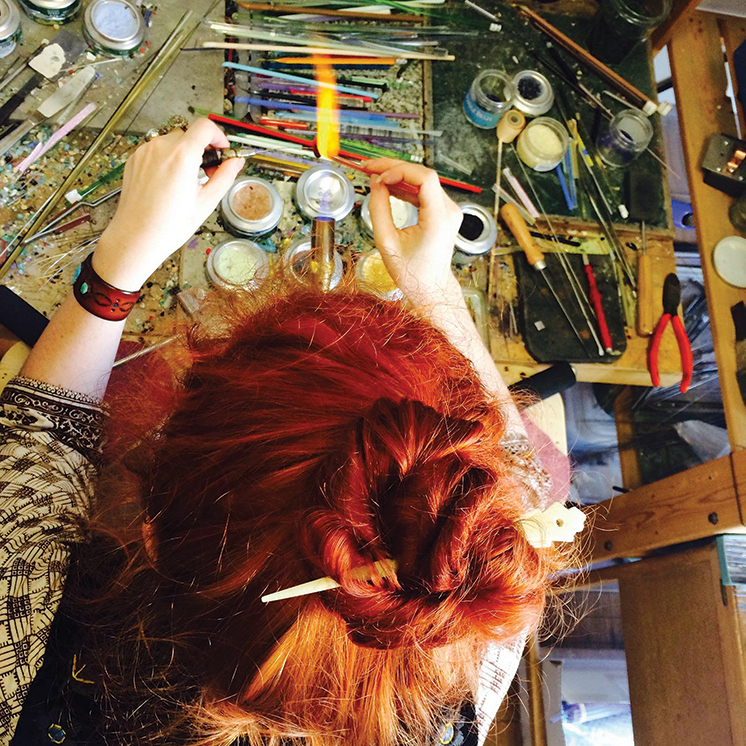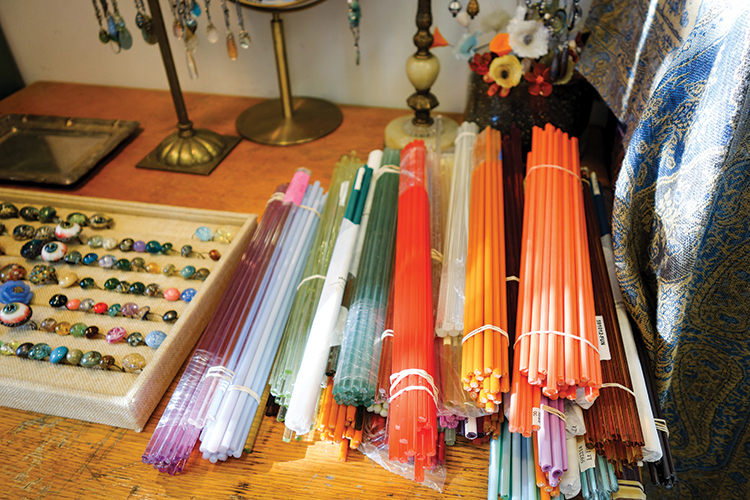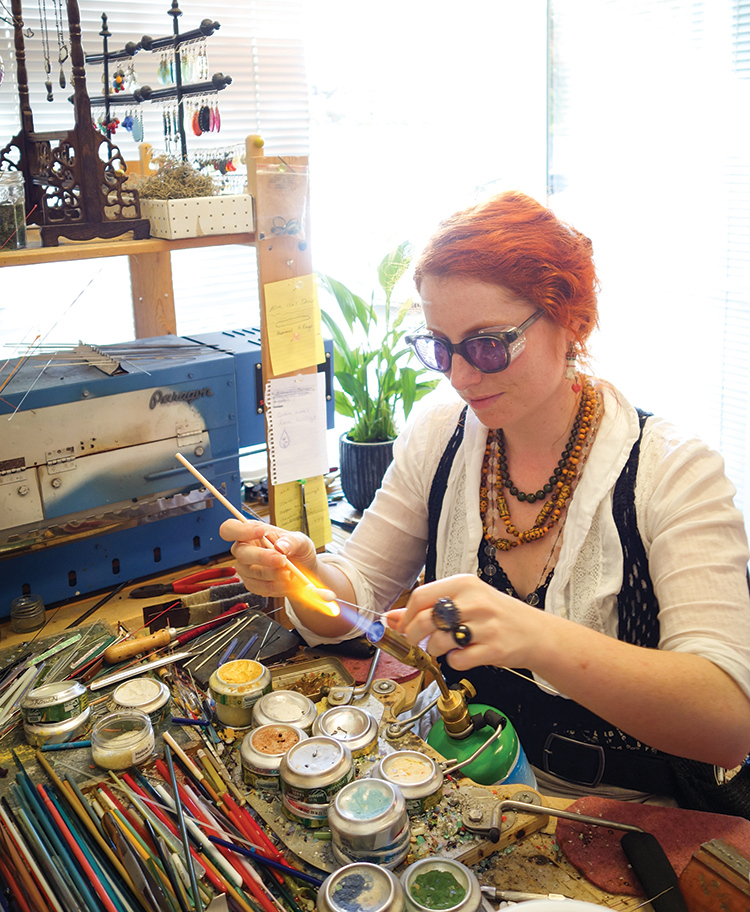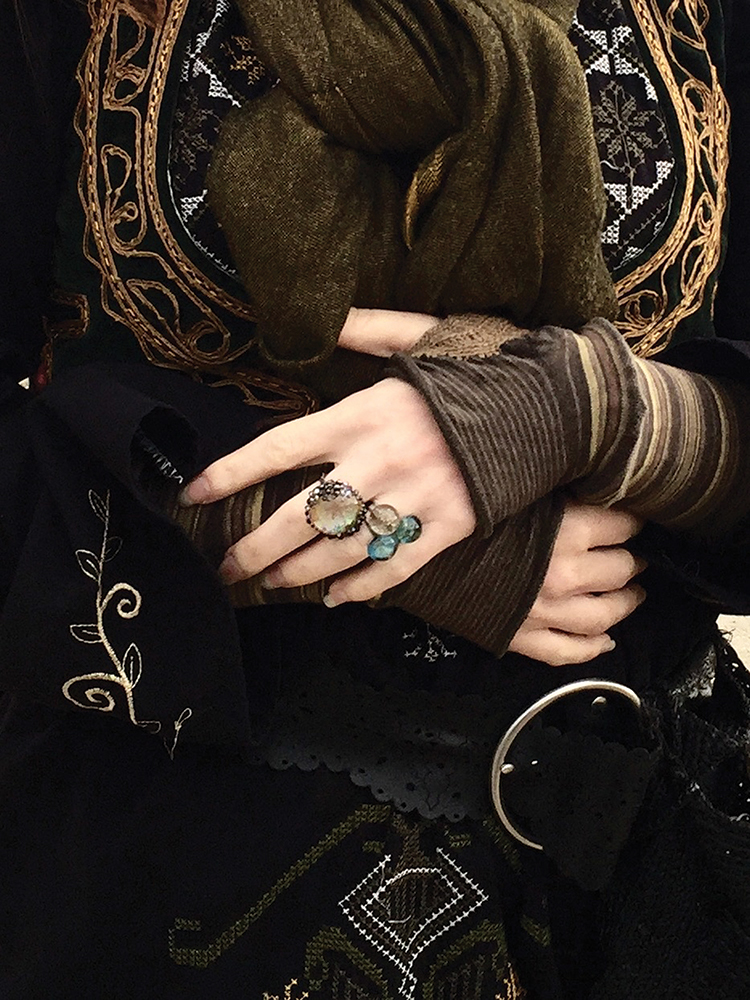
I grew up in Marin, CA with an extremely artistic family that mostly lived very close by; I have architects, dancers, artists, craftsmen and designers on both sides of my family. In addition to an artistic family, I also had an incredible art teacher living a few doors down from me named Annalies Atchely who is still making beautiful things today! She was a great influence on me and I always felt welcome in her studio. I grew up knowing that art and design were well-respected and fulfilling fields to go into. I was incredibly privileged in this way.
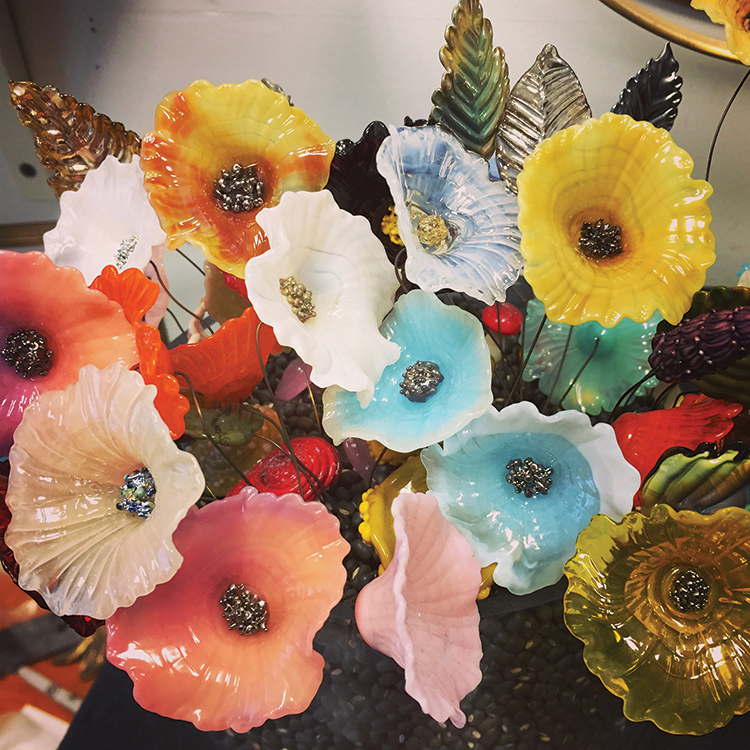
My drive to create was very strong from an early age and led me to make some, let’s say, “bold choices” at school where I thought it would be great to wear clothes that I made out of my mom’s fabric scrap pile and necklaces made out of telephone wire. I got made fun of a lot but I kept doing it, more out of an insatiable need to make things than out of any sense of self-confidence. My confidence came later when people started asking me to draw things for them or even buy things I had made.
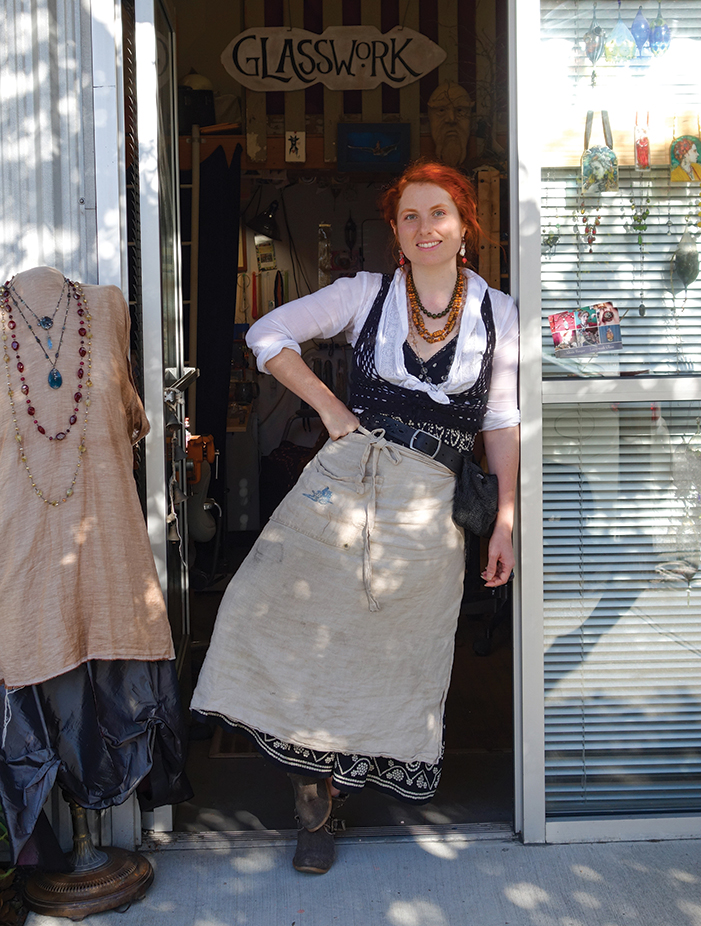
I was accepted to an art magnet school in San Francisco (Ruth Asawa San Francisco School Of The Arts SOTA) that trained me really well for college. Also it was great for me to be surrounded by other artistic kids who all were weirdos in one way or another; I finally felt like I fit in. People thought my handmade clothes were cool and not weird…or rather, they thought they WERE weird but thought that was awesome!
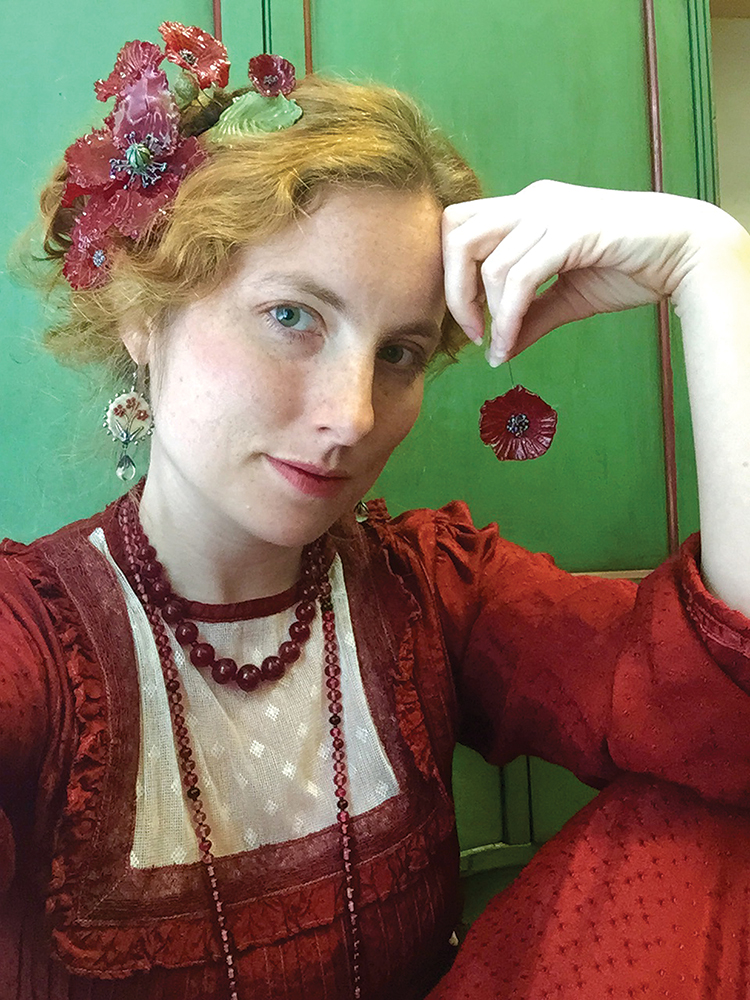
After that I went to RISD (Rhode Island School Of Design). RISD has a set of foundation classes that all incoming freshmen take in which you study drawing and 2D and 3D design. Students use this time to figure out what major to go into the next year. I considered a jewelry design major but I was still so in love with learning different techniques and materials that I wasn’t ready to settle on jewelry. To me it looked mostly like silversmithing, and at that point I wasn’t ready to study silversmithing for three years straight, so I chose the major that would allow me to work with the largest variety of materials, which happened to be Industrial Design (ID).
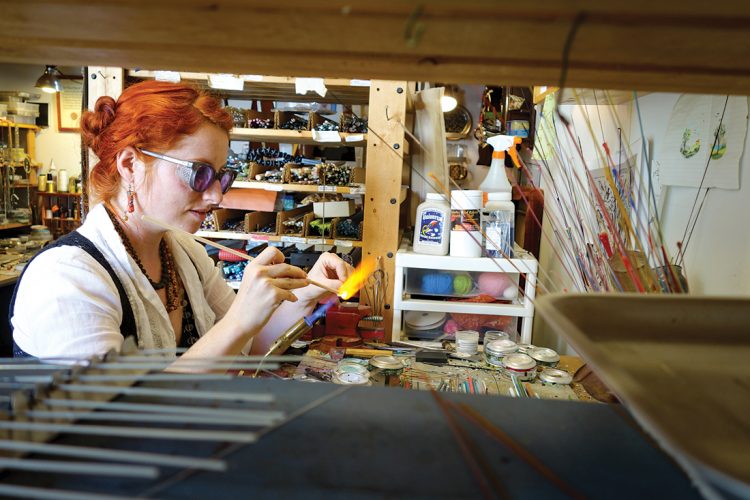
ID was a great major for me because it taught me how to design for a particular audience and use lots of different tools; I wanted to learn how EVERYTHING was made. The ID department had a full woodworking shop, metal shop and plastics (model) shop. There were sewing machines, milling machines and vacu-formers. I was in love with learning how to make everything! But there was not a glass shop in the ID department so it took a chance job opportunity over a summer for me to discover my true love…GLASS!
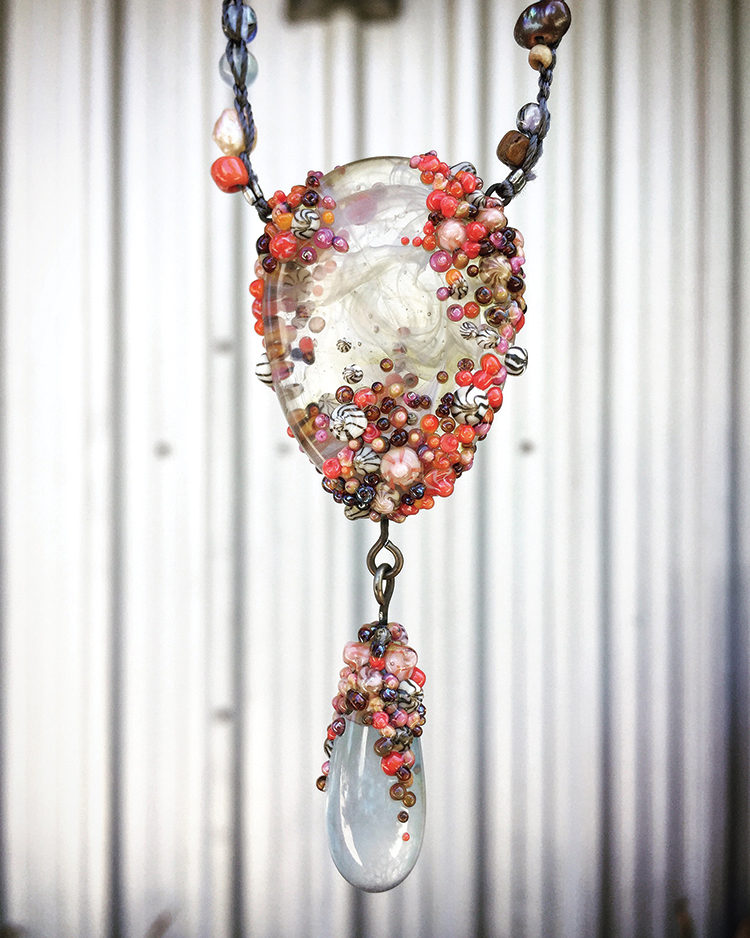
The summer between my junior and senior year of college (2004) I got a job teaching weaving and fiber arts at a fantastic camp in Connecticut named Buck’s Rock. This place had a full hot glass facility and a little lampworking studio. This is where I saw glass beads being made for the first time and I immediately fell in love.
I only had time that summer to make maybe 30 or so beads, but from that point on, glass was all I could think about. I dreamt about it at night and saw beads in transparent colors flashing in different shapes in my head. Every scrap of spare time was spent figuring out how to play with glass to make more beads. The next summer I spent back in California melting beer bottles with a plumber’s torch in my grandparents’ backyard. Unsurprisingly, I learned a lot about how NOT to work with glass the hard way. I made a lot of glass boogers and got burned pretty badly a few times. But by teaching myself this way I came up with some different ways of lampworking.
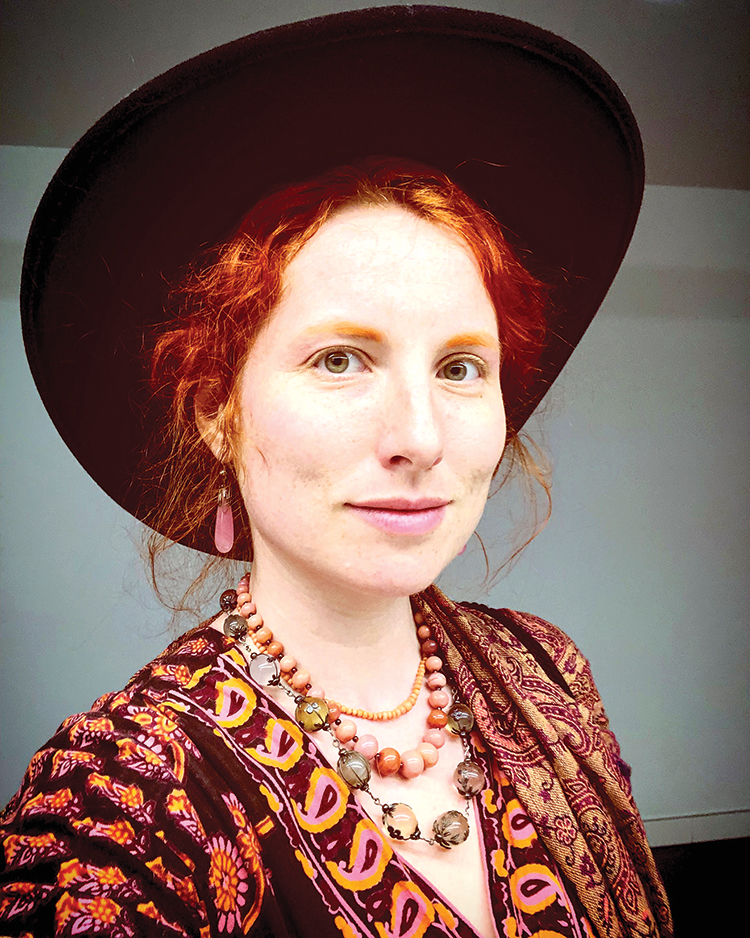
Glass, as a material, allows me to paint with light and color in three dimensions, which is critical to making the natural motifs that inspire my art.
Glass is incredible; it is the most magical substance, the more I learn about it the more it astounds me. Physicists are still debating over why it’s transparent, poets have written odes to it, the ancient Egyptians kept its manufacturing processes secret because it was so precious. It’s simultaneously profane and sacred. It can become a lowly bottle of beer and yet, when in the hands of a master, it can become an object fit for royalty. It’s a medium that allows the artist who uses it to capture colors, textures and transparency of the natural world with permanence unlike any other medium. It will never fade in color. There are glass beads from seventh century BC that look as vibrant today as the day they were pulled from the kiln.
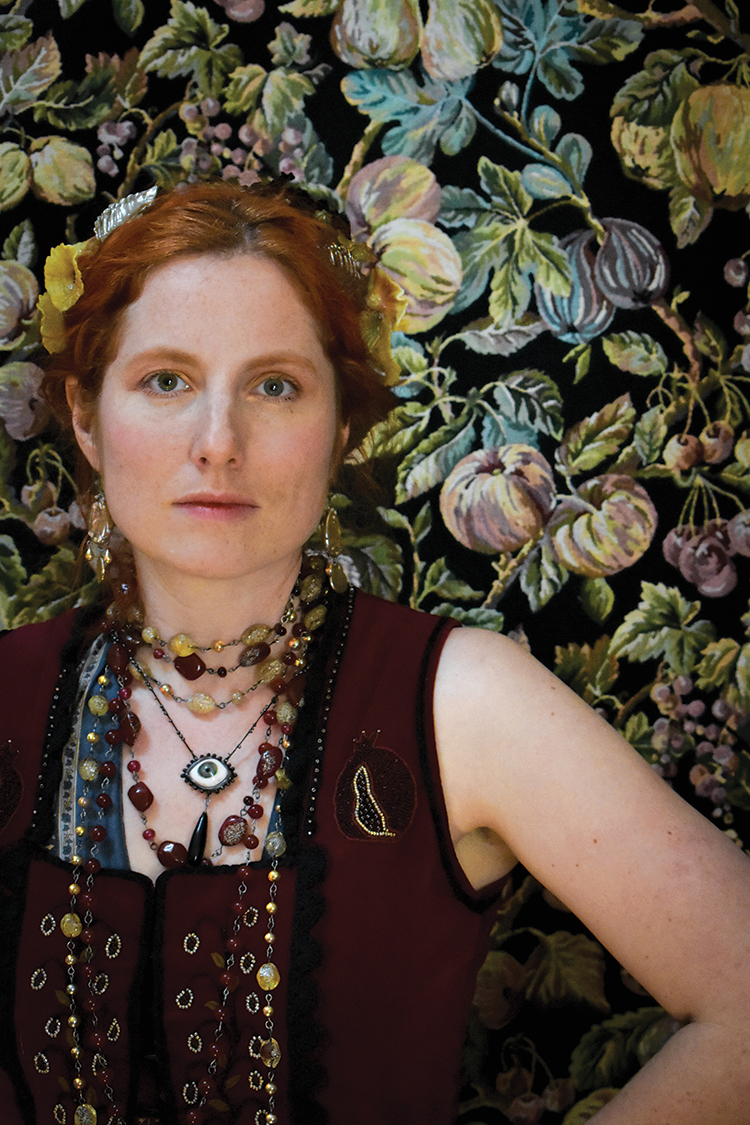
After I graduated from RISD, I worked building architectural models for a firm in San Francisco and set up a lampworking studio in a shack on the side of the apartment I was renting. I made beads every night in my spare time and started trying to sell the jewelry I made from them. At that point, I was still not sure that it was possible to make a career from making glass jewelry, but I was determined to keep practicing and learning. Quitting my day job was a scary leap when I did it and there were a few lean years where it was difficult to make ends meet—I wasn’t sure I’d made the right decision. Luckily I had support from my husband and friends who encouraged me and helped me make good connections and decisions. My success is truly a team effort.
Gravity plays a huge role—if you can get the glass to make the shape you want using heat and gravity, you’re doing what the glass wants to do.
My process is to start with rods of glass that I purchase from all over the world, from Italy, Germany, India, China or the U.S. Not all the colors of glass can mix together well; you need to learn what each color can do and “who” they can “play nice” with. My favorite glass comes from the company CIM (Creation is Messy), which is based out of Oregon. All of my glass rods are organized by color in my studio.
I use a propane torch to melt the glass and manipulate it using different tools; I use a graphite pad to press against or a simple X-Acto knife. I wrap this utility knife in wool to keep it insulated. I use this to make the precise shapes in my beads by pressing it into the hot glass.
The microcosm that exists in the flame of your torch has a reality of physics that works very differently from the normal temperatures that humans are used to dealing with. In that world, silver is a liquid, glass is like bubble gum or honey, and steel can get soft like a piece of licorice. You learn how to deal with these new physics rules inside the flames. From there is just some rolling, twisting and turning to manipulate the glass to create your vision—actually very simple once you get the hang of it!
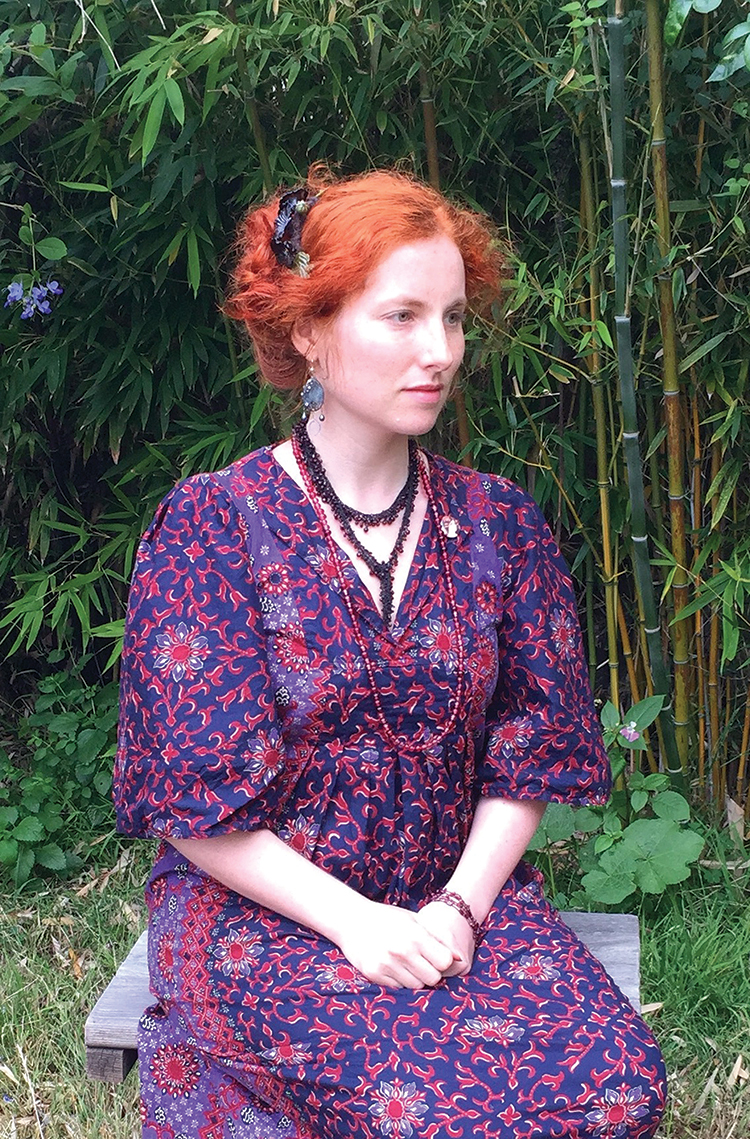
I wear glasses that are made with didymium and filter out the yellow glare from the flame, as well as protect my eyes from any chips of glass that might pop off while I’m working.
Inside my kiln it is 1000°, which is actually cool compared to my torch. When I have finished shaping a piece of glass I pop it quickly into my kiln, which keeps it warm and then it cools off to room temperature slowly over the next 12 hours.
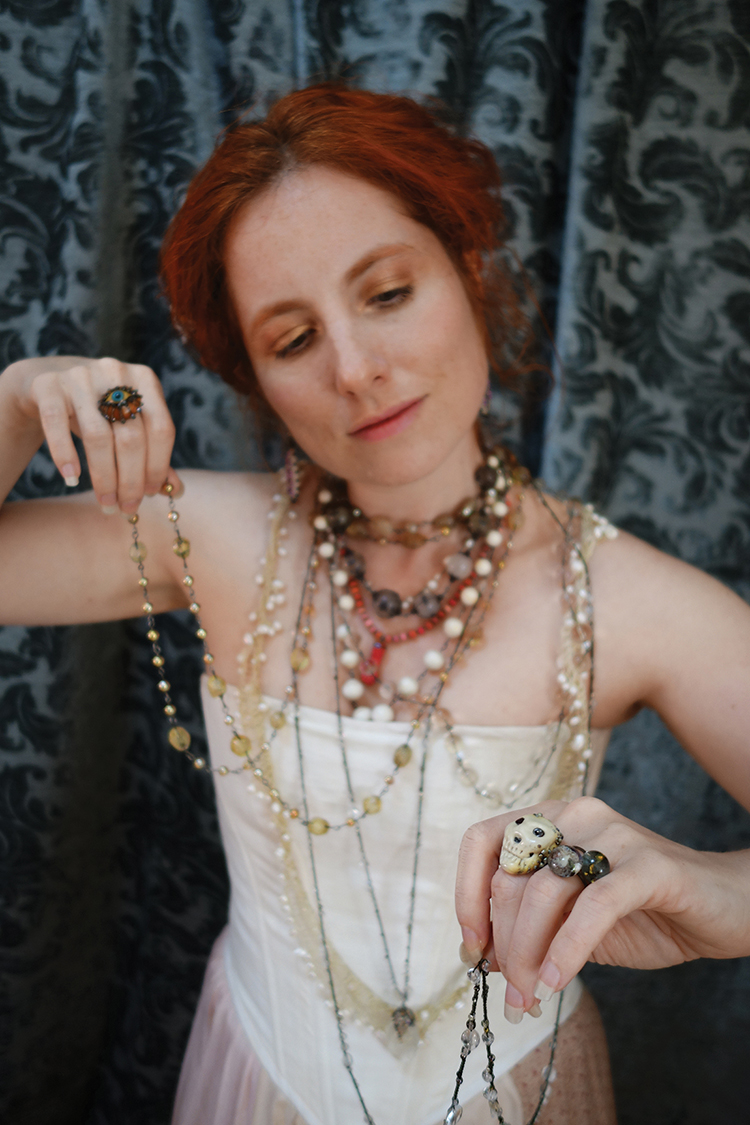
I use the cut-off bottoms of soda cans to make little dishes in which I keep powdered glass, metal shavings, mica powder and enamel powder. I dip the hot glass into them to add color and texture.
Once the pieces come out of my kiln, I affix them to their findings or add my silk crochet chains. I crochet the silk chains that I use for most of my pendants. I pre-string the beads and then use a VERY small crochet hook to make the fine chain. Lastly, I attach a silver clasp to both ends and then add my pendant.
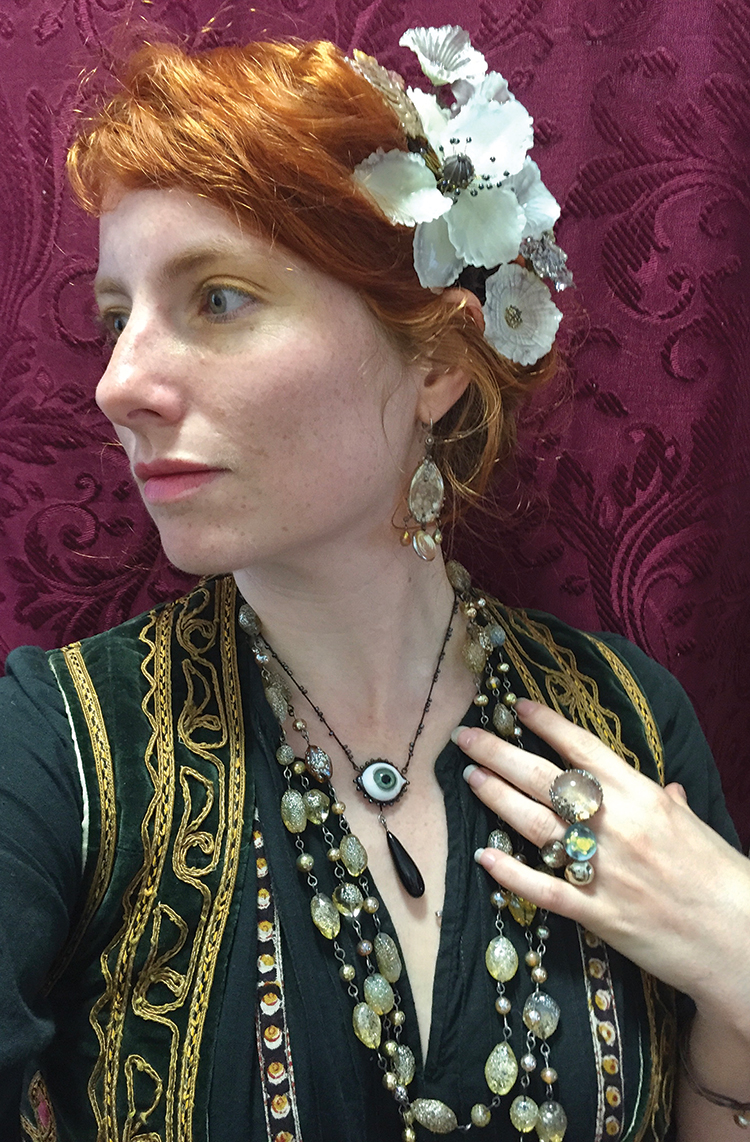
I have always tried to follow my heart. I imagine a world if there were no social judgment or pressure. First and foremost I try to please myself and go forward with the trust that if I make something I love, somebody else will too. I also respond to what customers are buying. But by only putting out work that I enjoy making, when people buy it, I am rewarded by getting to make more of it. Always trusting in your compass of taste is really important.

I grew up in Marin, CA with an extremely artistic family that mostly lived very close by; I have architects, dancers, artists, craftsmen and designers on both sides of my family. In addition to an artistic family, I also had an incredible art teacher living a few doors down from me named Annalies Atchely who is still making beautiful things today! She was a great influence on me and I always felt welcome in her studio. I grew up knowing that art and design were well-respected and fulfilling fields to go into. I was incredibly privileged in this way.

My drive to create was very strong from an early age and led me to make some, let’s say, “bold choices” at school where I thought it would be great to wear clothes that I made out of my mom’s fabric scrap pile and necklaces made out of telephone wire. I got made fun of a lot but I kept doing it, more out of an insatiable need to make things than out of any sense of self-confidence. My confidence came later when people started asking me to draw things for them or even buy things I had made.

I was accepted to an art magnet school in San Francisco (Ruth Asawa San Francisco School Of The Arts SOTA) that trained me really well for college. Also it was great for me to be surrounded by other artistic kids who all were weirdos in one way or another; I finally felt like I fit in. People thought my handmade clothes were cool and not weird…or rather, they thought they WERE weird but thought that was awesome!

After that I went to RISD (Rhode Island School Of Design). RISD has a set of foundation classes that all incoming freshmen take in which you study drawing and 2D and 3D design. Students use this time to figure out what major to go into the next year. I considered a jewelry design major but I was still so in love with learning different techniques and materials that I wasn’t ready to settle on jewelry. To me it looked mostly like silversmithing, and at that point I wasn’t ready to study silversmithing for three years straight, so I chose the major that would allow me to work with the largest variety of materials, which happened to be Industrial Design (ID).

ID was a great major for me because it taught me how to design for a particular audience and use lots of different tools; I wanted to learn how EVERYTHING was made. The ID department had a full woodworking shop, metal shop and plastics (model) shop. There were sewing machines, milling machines and vacu-formers. I was in love with learning how to make everything! But there was not a glass shop in the ID department so it took a chance job opportunity over a summer for me to discover my true love…GLASS!

The summer between my junior and senior year of college (2004) I got a job teaching weaving and fiber arts at a fantastic camp in Connecticut named Buck’s Rock. This place had a full hot glass facility and a little lampworking studio. This is where I saw glass beads being made for the first time and I immediately fell in love.
I only had time that summer to make maybe 30 or so beads, but from that point on, glass was all I could think about. I dreamt about it at night and saw beads in transparent colors flashing in different shapes in my head. Every scrap of spare time was spent figuring out how to play with glass to make more beads. The next summer I spent back in California melting beer bottles with a plumber’s torch in my grandparents’ backyard. Unsurprisingly, I learned a lot about how NOT to work with glass the hard way. I made a lot of glass boogers and got burned pretty badly a few times. But by teaching myself this way I came up with some different ways of lampworking.

Glass, as a material, allows me to paint with light and color in three dimensions, which is critical to making the natural motifs that inspire my art.
Glass is incredible; it is the most magical substance, the more I learn about it the more it astounds me. Physicists are still debating over why it’s transparent, poets have written odes to it, the ancient Egyptians kept its manufacturing processes secret because it was so precious. It’s simultaneously profane and sacred. It can become a lowly bottle of beer and yet, when in the hands of a master, it can become an object fit for royalty. It’s a medium that allows the artist who uses it to capture colors, textures and transparency of the natural world with permanence unlike any other medium. It will never fade in color. There are glass beads from seventh century BC that look as vibrant today as the day they were pulled from the kiln.

After I graduated from RISD, I worked building architectural models for a firm in San Francisco and set up a lampworking studio in a shack on the side of the apartment I was renting. I made beads every night in my spare time and started trying to sell the jewelry I made from them. At that point, I was still not sure that it was possible to make a career from making glass jewelry, but I was determined to keep practicing and learning. Quitting my day job was a scary leap when I did it and there were a few lean years where it was difficult to make ends meet—I wasn’t sure I’d made the right decision. Luckily I had support from my husband and friends who encouraged me and helped me make good connections and decisions. My success is truly a team effort.
Gravity plays a huge role—if you can get the glass to make the shape you want using heat and gravity, you’re doing what the glass wants to do.
My process is to start with rods of glass that I purchase from all over the world, from Italy, Germany, India, China or the U.S. Not all the colors of glass can mix together well; you need to learn what each color can do and “who” they can “play nice” with. My favorite glass comes from the company CIM (Creation is Messy), which is based out of Oregon. All of my glass rods are organized by color in my studio.
I use a propane torch to melt the glass and manipulate it using different tools; I use a graphite pad to press against or a simple X-Acto knife. I wrap this utility knife in wool to keep it insulated. I use this to make the precise shapes in my beads by pressing it into the hot glass.
The microcosm that exists in the flame of your torch has a reality of physics that works very differently from the normal temperatures that humans are used to dealing with. In that world, silver is a liquid, glass is like bubble gum or honey, and steel can get soft like a piece of licorice. You learn how to deal with these new physics rules inside the flames. From there is just some rolling, twisting and turning to manipulate the glass to create your vision—actually very simple once you get the hang of it!

I wear glasses that are made with didymium and filter out the yellow glare from the flame, as well as protect my eyes from any chips of glass that might pop off while I’m working.
Inside my kiln it is 1000°, which is actually cool compared to my torch. When I have finished shaping a piece of glass I pop it quickly into my kiln, which keeps it warm and then it cools off to room temperature slowly over the next 12 hours.

I use the cut-off bottoms of soda cans to make little dishes in which I keep powdered glass, metal shavings, mica powder and enamel powder. I dip the hot glass into them to add color and texture.
Once the pieces come out of my kiln, I affix them to their findings or add my silk crochet chains. I crochet the silk chains that I use for most of my pendants. I pre-string the beads and then use a VERY small crochet hook to make the fine chain. Lastly, I attach a silver clasp to both ends and then add my pendant.

I have always tried to follow my heart. I imagine a world if there were no social judgment or pressure. First and foremost I try to please myself and go forward with the trust that if I make something I love, somebody else will too. I also respond to what customers are buying. But by only putting out work that I enjoy making, when people buy it, I am rewarded by getting to make more of it. Always trusting in your compass of taste is really important.












